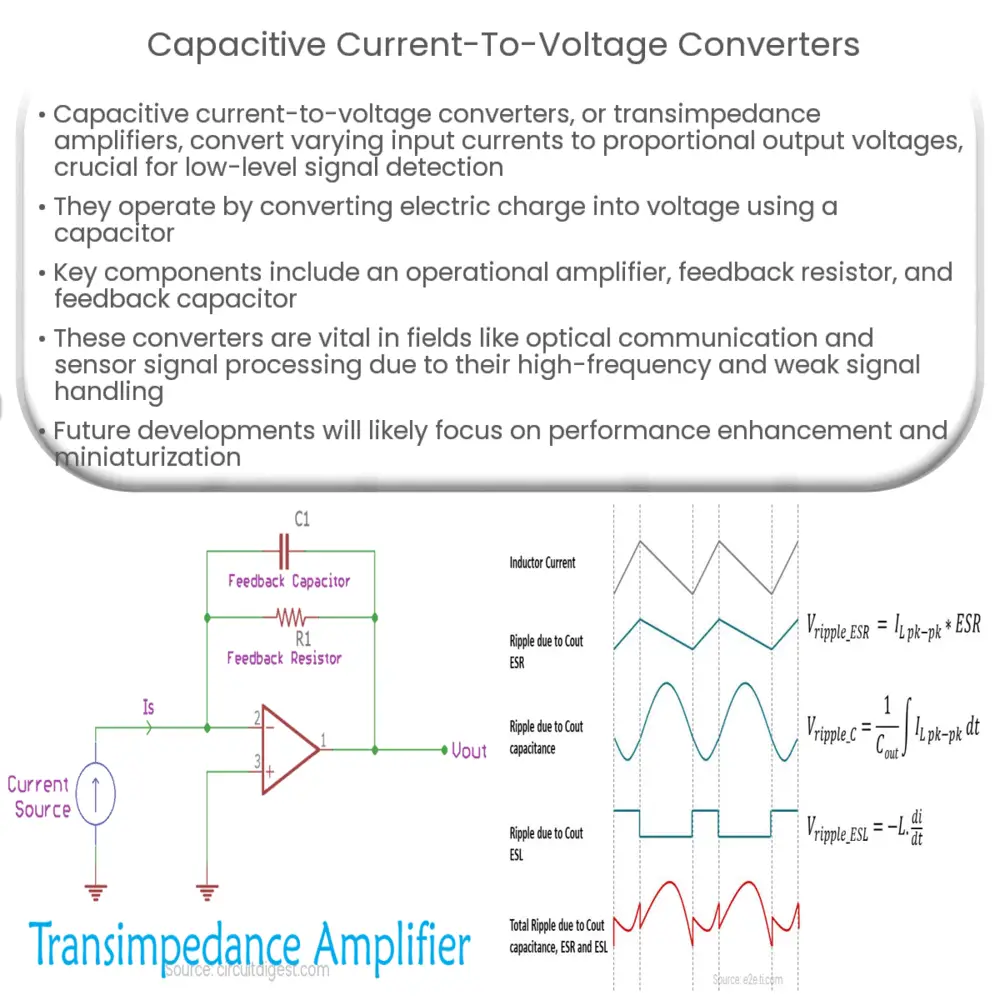Explore the workings, components, and applications of capacitive current-to-voltage converters, and the future of these vital electronic devices.

Introduction to Capacitive Current-to-Voltage Converters
Capacitive current-to-voltage converters are fundamental components in many electrical and electronic systems. These devices, often also referred to as transimpedance amplifiers (TIAs), primarily serve to transform a varying input current into a proportional output voltage. Their importance in circuits is paramount, especially in systems that deal with low-level signal detection.
Working Principle of Capacitive Current-to-Voltage Converters
The operating principle of capacitive current-to-voltage converters hinges on the conversion of electric charge into voltage. The input current generates a charge that is stored in the converter’s capacitor. The capacitor then converts this stored charge into an equivalent voltage, which is then amplified and given as the output.
Key Components of a Capacitive Current-to-Voltage Converter
The main components of a capacitive current-to-voltage converter include an operational amplifier (Op-Amp), a feedback resistor, and a feedback capacitor. The operation of a TIA is primarily based on the functioning of these essential components.
When a current flows into the inverting input (-) of the Op-Amp, it is converted into a voltage signal by the feedback network, which consists of the feedback resistor and the feedback capacitor. The non-inverting input (+) is generally grounded, which means it is connected to the system’s common or reference potential. This leads to a change in output voltage that is proportional to the input current.
Applications of Capacitive Current-to-Voltage Converters
These converters find their application in a variety of fields due to their ability to handle high frequencies and weak signal currents. A few notable domains include optical communication systems, precision measurement instruments, sensor signal processing, and photon counting devices.
In the field of optical communication systems, for example, capacitive current-to-voltage converters are used in conjunction with photodiodes to convert the current produced by the diode into a usable voltage signal. This is essential for the subsequent stages of signal processing and transmission.
Design Considerations and Performance Parameters
The design of capacitive current-to-voltage converters involves a careful balancing of several key performance parameters. Here are a few that are often taken into consideration:
Capacitive Current-to-Voltage Converters in the Future
With the advancement of technology and the growing need for high-speed and high-precision electronic systems, the demand for more efficient and reliable capacitive current-to-voltage converters is projected to increase. Future developments in this domain are likely to focus on enhancing performance parameters such as gain stability, noise performance, and bandwidth, while also aiming for miniaturization and power efficiency.
Conclusion
In conclusion, capacitive current-to-voltage converters play a vital role in a wide range of electronic and electrical systems, converting input currents into proportional output voltages. While their design involves careful consideration of various performance parameters, advancements in technology promise to increase their efficiency, reliability, and applicability. Whether in optical communication systems or precision measurement instruments, these converters continue to be an integral part of our technologically driven world.

